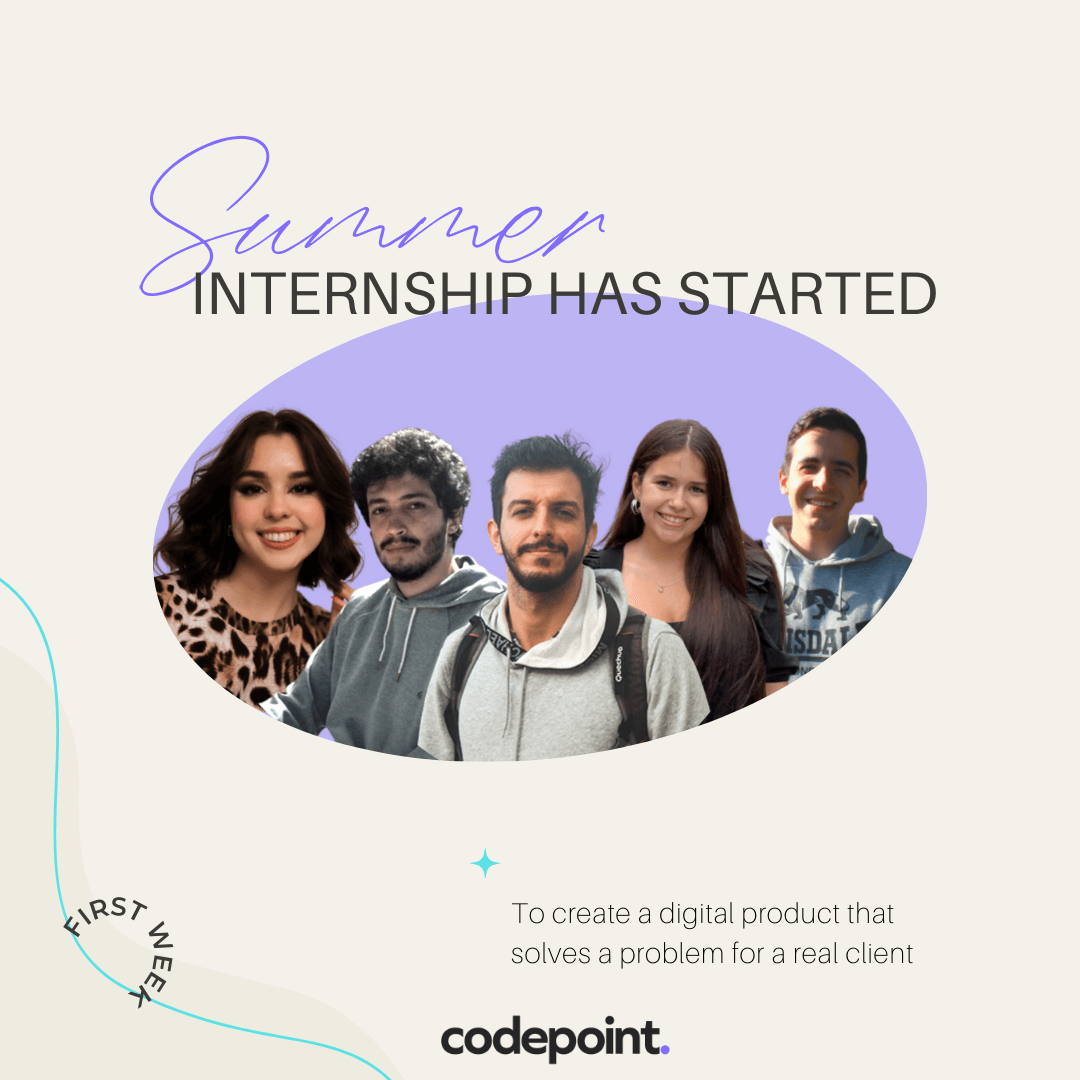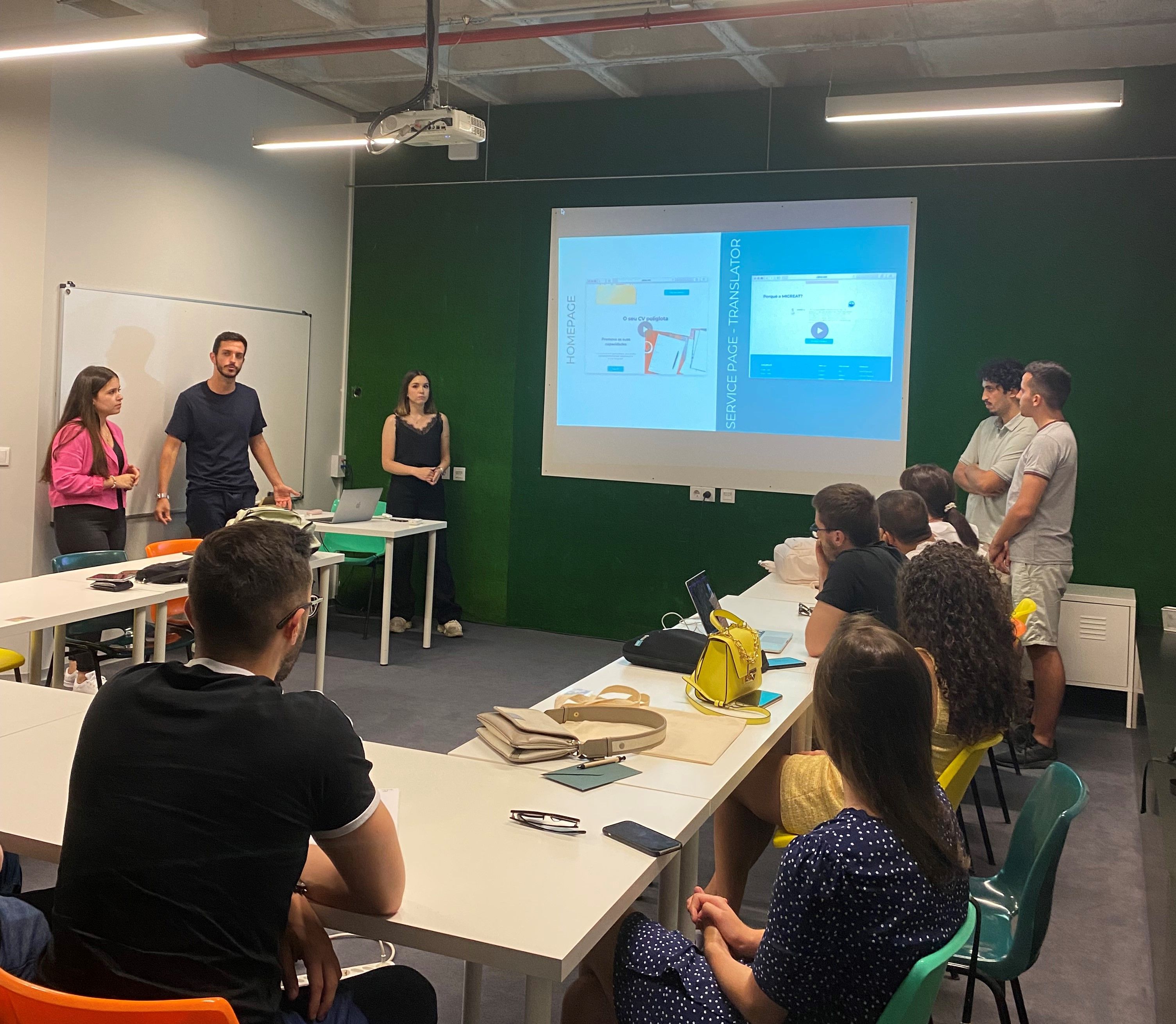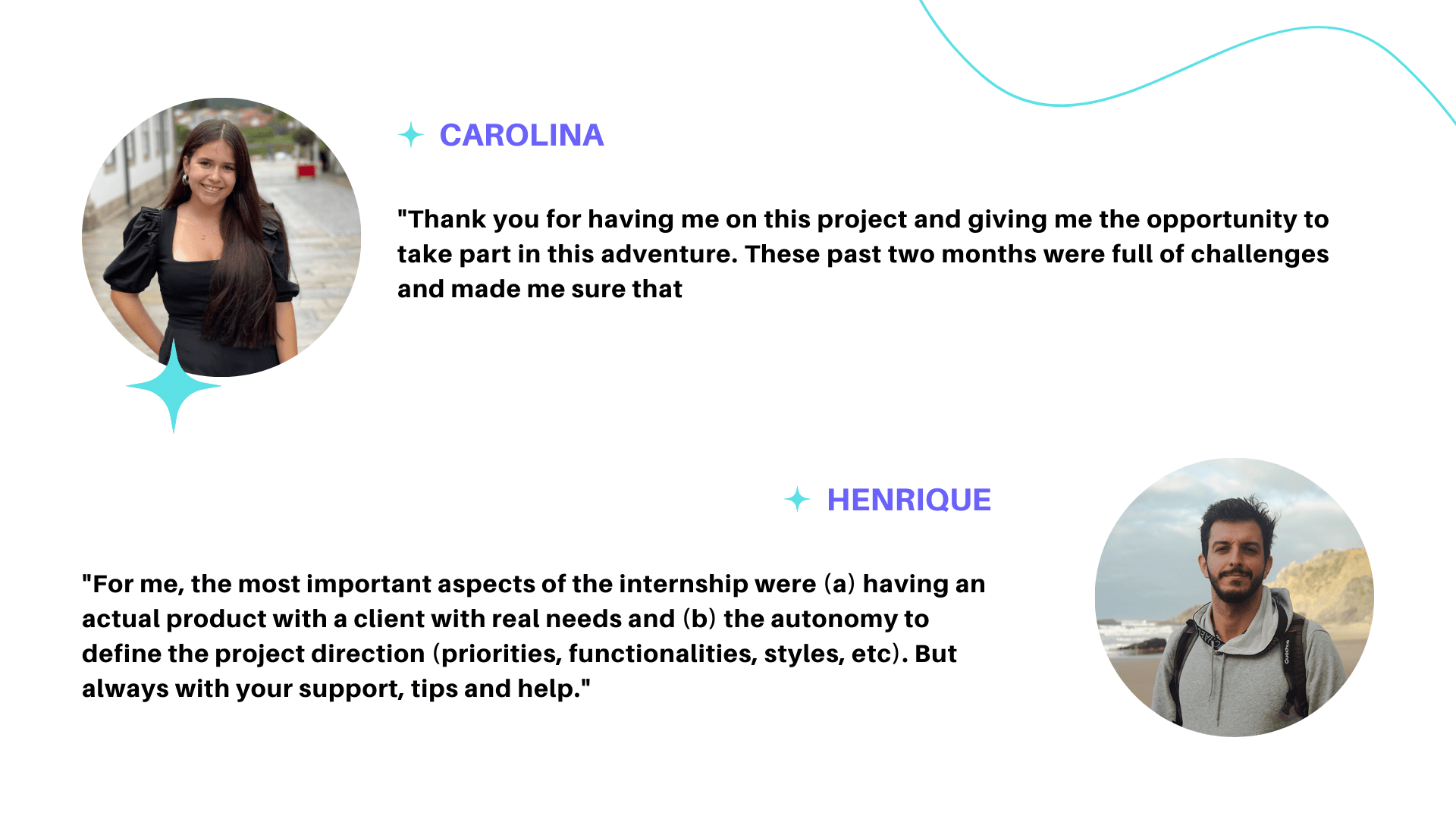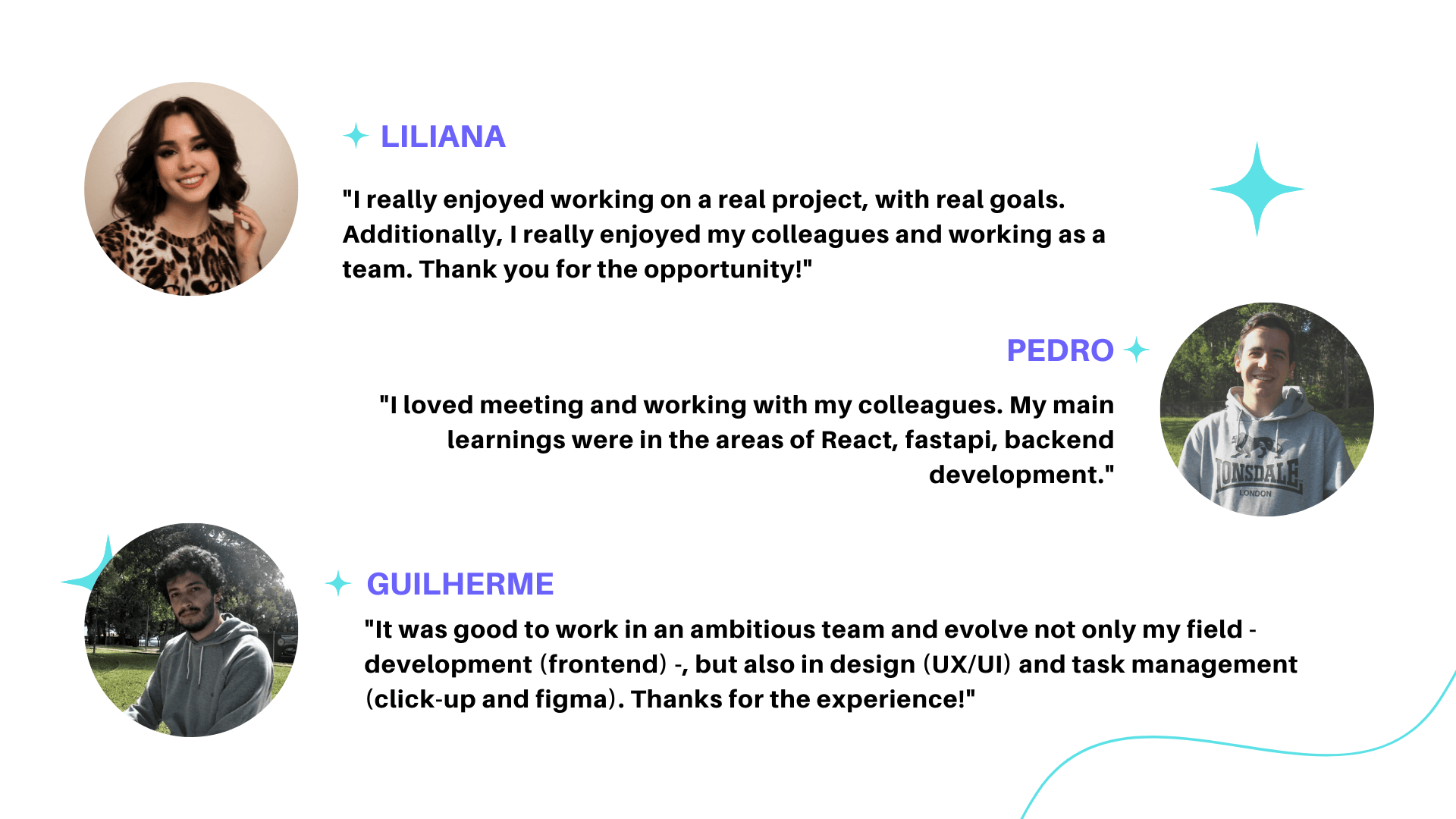Our 1st Summer Internship

The goal was to learn from new talent and share knowledge. We pledged our time, our dedication and patience, and our teaching. We wouldn't undertake anything we didn't feel capable of doing... And this was the right year. The truth is that we don't do anything for the sake of doing it... So we wanted to take our time and prepare a memorable and enriching internship program. Basically, to provide the internship experience we would have liked to have had.
We set the goal of forming a small agency composed of a complete team capable of developing all aspects of a digital product. Once the decision was made, we opened vacancies to receive students from the following areas: design, software development, management and marketing. We prepare an internship plan with defined goals for the 6 weeks in order to prepare our team to receive the program.

When we decided to go ahead with the internship, the team held a kind of brainstorming session - where we discussed themes for the program. However, in the meantime, a client of ours shared with us a need that he felt was missing in his business, and we decided to take advantage of this opportunity by directing this project to our team of interns. We set the bar very high. Let's really put them to the test working directly with a client?!
The client who challenged us, Patrick, has a company that helps emigrants who have worked in Switzerland to organize their pensions, called "Reformas na Suíça ". This time, the product he proposed to us to develop arose from a need he found in the market he knows so well: the emigrant community.
When someone leaves their country of origin and makes their career in another country, they encounter many barriers: cultural, linguistic, and financial. In order to facilitate the life and transition of an emigrant to a new country, Patrick wanted to create a platform that would help emigrants in this process and in their integration.
The challenge was to create a tool that would facilitate this transition, the following core functionalities were defined:
- Translation of files (audio, image or text);
- Availability of templates of indispensable documents for emigrants (e.g.: motivation letter and termination letter);
- A CV generator;
The main difficulty for those who emigrate is the language barrier. Therefore, the creation of a quick and easy-to-use translation tool was the core of this project.
To make a life abroad, the first step is to find a job. To help with this, the client wanted to create a multilingual CV generator, where users could simply fill in some fields with their information, choose their final language, and... ta-da, they had their resume ready to hand out.
The same would happen for documents, such as motivation letters and termination letters. By filling in your personal data in your native language, the platform would convert that information into a final customized document translated into the desired language.
In short, a platform is a support tool for emigrants. Besides translating content into a foreign language, it offered access to several templates of important documents central to the emigration process.

- Identify problems and select solutions;
- Outline the product and describe its functionalities;
- Creation of wireframes on paper, drawing, or platform;
- Creation of project documentation;
- Keeping the history of project meetings and notes;
- Task, time and documentation management through our project management software: ClickUp;
- Define the system architecture, programming language to be used, Database Management System (DBMS), among others;
- Distribute the system's related object classes in subsystems and their components, modeling the relationships of each module, in order to realize its functionalities. The software architecture is the basis of the entire project because it defines the internal workings of the system so that all specifications can be implemented;
- Perform various tests in order to validate the product, testing each functionality and taking into account the specifications of the design phase;
- Using GitLab as a repository for project storage, each team member can collaborate on planning, building, securing, and deploying software to get project deliverables faster with full transparency, consistency, and traceability;
Are they up to it?
P.S take a look at the case study of the developed product here.


Seeing the trainees so excited and ready to get started made us equally excited! We couldn't wait to see the solutions they would propose to the problem, their approaches, their working methods... In the end, we found the experience very enriching for our team and the internship participants. Our goal of creating a real experience was achieved.
It was clear to us that it is not the result that brings learning, but the path taken, and in that sense, the dynamic was a success. The trainees learn but also teach us... by observing their interactions, practices, and approaches.
In addition, we got the basis of a product with a real customer and with a very relevant purpose...
Well played, right?




